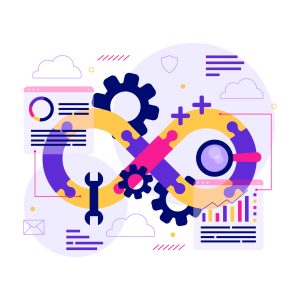Brilliant Omnichannel Contact Center Guide 2025
Customers expect fast, personal service on the channel of their choice. Today, businesses that want to stay competitive adopt an Omnichannel Contact Center — a unified communication platform that brings voice, email, chat, social and messaging into one place. In this guide (Part 1), we’ll explain what an Omnichannel Contact Center is, why it matters, who benefits, and how to choose the right solution.
In addition, we’ll cover practical tips on features, vendor evaluation, and a step-by-step approach to selecting an Omnichannel Contact Center. These best practices will also highlight how an Omnichannel Contact Center improves customer engagement, reduces agent friction, and helps your business measure return on investment.
What Is an Omnichannel Contact Center?
An Omnichannel Contact Center is a centralized customer engagement system that consolidates multiple communication channels into a single agent workspace. Instead of switching tools, agents see email threads, chat transcripts, phone calls, and social messages in one timeline. This single source of truth improves response quality and reduces the need to repeat customer details.
Technically, an Omnichannel Contact Center connects to your CRM, knowledge base, and third-party systems so every touchpoint—chat, SMS, WhatsApp, social DM, and voice—is visible and actionable. For this reason, many teams call it a CX platform or unified communication platform.
An Omnichannel Contact Center eliminates channel fragmentation so customers receive consistent, context-aware support regardless of how they reach you.
Why Use an Omnichannel Contact Center?
First and foremost, customers want convenience. When you support customers across their preferred channels, they feel heard and valued. An Omnichannel Contact Center allows that convenience while making it simpler for agents to resolve issues quickly. Therefore, customer satisfaction improves and operational costs fall.
Second, it provides better analytics. Because every interaction is recorded and linked to a customer profile, businesses can spot trends, identify friction points in the customer journey, and proactively improve services. In short, omnichannel platforms drive better decisions with real data.
Finally, it supports modern strategies like AI customer service and automation. For example, chatbots can solve simple queries, and intelligent routing sends complex issues to senior agents. This combination of automation and human support scales customer service efficiently.
Key Benefits of an Omnichannel Contact Center

Investing in an Omnichannel Contact Center delivers measurable business benefits. Below we summarize the outcomes you can expect and explain why these matter.
First, customer experience improves. Because agents have context, they solve problems faster and with fewer handoffs. Customers don’t repeat information, which raises satisfaction and loyalty.
Second, agent efficiency increases. A unified agent desktop reduces tool-switching time. As a result, average handle time drops and first contact resolution rises.
Third, businesses gain better insights. An Omnichannel Contact Center provides cross-channel analytics so leaders can measure performance, optimize staffing, and focus on high-impact improvements.
- Better customer satisfaction and retention
- Faster resolution times and lower operational costs
- Improved agent satisfaction and reduced churn
- Actionable data for product, marketing, and support teams
Who Can Benefit from an Omnichannel Contact Center?
The short answer: almost any organization that interacts with customers. However, some industries see immediate, measurable gains:
Retailers can tie online behavior to in-store purchases. Telecoms manage high-volume support without losing context. Finance and fintech firms benefit from secure, compliant messaging. Healthcare providers coordinate care across calls, portals, and messaging. In each case, an Omnichannel Contact Center ensures consistent experiences.
Small and midsize companies also benefit: modern cloud contact center solutions remove the need for heavy upfront investment. As a result, even small teams can deliver enterprise-level customer support.
Omnichannel vs Multichannel: What’s the Difference?
People often confuse omnichannel and multichannel. A multichannel setup simply offers many channels, but interactions remain siloed. By contrast, an Omnichannel Contact Center integrates those channels, creating a continuous, context-rich experience for both customers and agents.
| Feature | Multichannel | Omnichannel Contact Center |
|---|---|---|
| Customer Experience | Fragmented | Seamless across channels |
| Agent View | Multiple dashboards | Single unified workspace |
| Analytics | Channel-based | Cross-channel insights |
| Continuity | Often lost | Maintained end-to-end |
Ultimately, an Omnichannel Contact Center reduces friction and improves outcomes because it treats the customer journey as one continuous experience—not a set of disconnected interactions.
Core Features to Look For in an Omnichannel Contact Center
Not all solutions are created equal. Look for features that support both agents and customers. Below are the essential capabilities that every strong Omnichannel Contact Center should provide.
First, a unified inbox and deep CRM integration are crucial. When your Contact Center ties directly into customer records, agents can personalize responses and act on purchase history or support tickets.
Second, AI and automation are no longer optional. Chatbots, intent recognition, and predictive routing reduce agent load while delivering quick answers to common queries.
Third, robust analytics help you measure what matters—CSAT, FCR, AHT, and channel performance. A modern Omnichannel Contact Center provides dashboards and reports that business leaders can act on.
- Unified inbox & CRM integration
- AI & automation (chatbots, IVR, predictive routing)
- Multichannel support (voice, web chat, SMS, WhatsApp, social)
- Real-time reporting and workforce management
- Security & compliance (encryption, audit logs)
- Open APIs and ecosystem integrations
How to Choose the Right Omnichannel Contact Center

Choosing an Omnichannel Contact Center starts with clear goals. Ask: do you need faster response times, better routing, or improved analytics? Your goals determine the features you prioritize.
Next, review your current systems. An Omnichannel Contact Center must integrate smoothly with your CRM, knowledge base, and other tools. Compatibility reduces project risk and shortens time-to-value.
Then, evaluate vendors using a checklist: ease of integration, platform reliability, security, pricing model, and support quality. Request a demo and a short trial to validate real-world performance.
Finally, consider scalability. A cloud contact center model allows you to add channels and capacity when you need them, often with predictable operational costs.
For your convenience, here’s a short checklist to take to vendor demos:
- Does the platform provide a single agent desktop for all channels?
- How easily does it integrate with your CRM and data warehouse?
- What AI capabilities are included (bots, routing, sentiment)?
- Are there built-in analytics, dashboards, and exportable reports?
- What are the SLAs, uptime guarantees, and support options?
Step-by-Step Implementation Planning (Overview)
Before you begin implementation, create a phased plan. A typical rollout includes pilot, integration, training, and measurement phases. This approach reduces risk and lets you iterate quickly.
A simple phased plan for an Omnichannel Contact Center looks like this:
- Discovery & goals
- Pilot with a limited channel set
- Full integration with CRM and back-end systems
- Broad agent training and change management
- Ongoing measurement and optimization
In Part 2, we’ll expand each step with templates, training material examples, KPI tracking dashboards, and more actionable advice to execute an effective Omnichannel Contact Center strategy.
Implementation — Detailed Steps & Checklists for Your Omnichannel Contact Center
In Part 2 we expand on planning and deliver practical, ready-to-use steps you can follow to implement an Omnichannel Contact Center. Below you’ll find templates, rollout phases, training modules, vendor negotiation tips, sample KPIs, and a content plan for continuous improvement. This section is written so your team can take action immediately.
Phase 1 — Discovery & Design (2–4 weeks)
Start small but think big. During discovery, document business goals, common customer journeys, peak volumes, compliance needs, and system dependencies. For each use case, map the expected customer path and the agent experience. This stage should produce a clear requirements document for your Omnichannel Contact Center implementation.
Key deliverables at this stage include:
- A prioritized requirements list for the Omnichannel Contact Center.
- A channel roadmap (which channels to enable now, which later).
- An integration matrix listing systems (CRM, ERP, knowledge base).
- Acceptance criteria for pilots and success metrics (CSAT targets, FCR, AHT).
Phase 2 — Pilot & Validate (4–8 weeks)
Next, run a pilot with a subset of agents, customers, or channels. A pilot reduces risk and surfaces integration gaps. During the pilot, validate that your chosen Omnichannel Contact Center handles context switching, routing, and reporting as expected.
Use these pilot steps:
- Configure a small number of agent seats with CRM links and a unified inbox.
- Enable 2–3 channels (e.g., voice, web chat, and WhatsApp) and test handover between them.
- Collect agent feedback daily and fix usability issues quickly.
- Measure CSAT, FCR, and AHT against your target baseline.
Phase 3 — Full Integration & Rollout (8–16 weeks)
After a successful pilot, plan full integration. Integrate the Omnichannel Contact Center with core business systems (CRM, order systems, billing). Train key super-users, finalize routing rules, and prepare your knowledge base for multi-channel access.
Important rollout tasks:
- Bulk import of historical tickets and conversation context where possible.
- Advanced routing rules based on intent, customer value, or language.
- Full agent training and job aids for each channel.
- Cutover planning and fallback procedures in case of system issues.
Training Modules — How to Train Agents for an Omnichannel Contact Center
Training is central to adoption. Agents must be fluent across channels and comfortable with the Contact Center workspace. Below are structured modules you can use as a training syllabus.
Module 1 — Platform Orientation (2 hours)
Introduce agents to the Contact Center interface: unified inbox, customer timeline, shortcuts, and escalation flows. Walk through a few live examples and let agents practice in a sandbox environment.
Module 2 — Channel Skills (4–6 hours)
Provide hands-on practice for each channel. Agents should learn concise chat etiquette, voice scripting basics, SMS brevity, and social DM tone. Emphasize the differences in response patterns and how to escalate when needed.
Module 3 — Knowledge & Tools (2 hours)
Teach agents how to use the integrated knowledge base and CRM fields to personalize responses. Show them how to tag conversations and log outcomes to keep customer records accurate.
Module 4 — AI Collaboration (2 hours)
Train agents on using AI assistants and suggested replies. Explain when to accept suggestions, when to edit, and how to correct bot mistakes to improve machine learning models over time.
Module 5 — Continuous Coaching (ongoing)
Run weekly coaching sessions, 1:1 reviews, and targeted workshops focused on problem areas highlighted in your dashboard. Use recorded interactions (with privacy controls) to teach best practices.

Scripts, Templates & Playbooks for Agents
Agents succeed with clear, flexible playbooks that guide tone, escalation, and resolution steps. Below are short examples you can copy into your Omnichannel Contact Center knowledge base.
Simple Chat Greeting (Template)
“Hello {name} — thanks for reaching {brand}. I’m {agent}. How can I help you today?”
Escalation Play
When a chat needs escalation, use: “I’m escalating this to our specialist team for faster resolution. I’ll share your reference {ticket} and they will contact you within {timeframe}.”
Email Follow-up Template
“Hi {name}, following up on our call/chat—here’s the summary and next steps. If anything changes, reply to this message and we’ll update your case in our Omnichannel Contact Center.”
Store these templates in your Omnichannel Contact Center’s knowledge base so agents can quickly insert them and preserve tone consistency.
Top Tools & Integrations for an Omnichannel Contact Center
Your Omnichannel Contact Center is only as powerful as the systems it integrates with. Consider the following integrations to maximize value:
- CRM Integration — Salesforce, HubSpot, Microsoft Dynamics. Tightly link interactions to customer records.
- Knowledge Base — Confluence, Zendesk Guide, internal KBs for quick answers.
- AI / NLP — Sentiment analysis, intent classification, suggested replies, and virtual agents.
- Workforce Management — Tools to optimize scheduling and forecasting for channels.
- Analytics & BI — Export data to Tableau, Power BI, or custom dashboards for cross-functional insight.
- Messaging Platforms — WhatsApp Business API, Facebook Messenger, WeChat, Telegram for global reach.

AI & Automation: How to Use Bots Without Breaking CX
AI can resolve simple queries and free agents to handle complex issues. However, automation must be applied carefully so it does not degrade experience. Use bots for FAQs, authentication steps, order status checks, and routing.
Best practices for AI in an Omnichannel Contact Center:
- Design clear handover paths from bot to agent.
- Expose suggested replies to agents rather than auto-sending in sensitive scenarios.
- Continuously retrain NLP models using real, labeled conversations captured by the Omnichannel Contact Center.

KPIs and Reporting
Measure what matters. Your Omnichannel Contact Center should produce both operational metrics and business outcomes. Example KPIs include:
- CSAT (Customer Satisfaction) — post-interaction surveys across channels.
- NPS (Net Promoter Score) — long-term loyalty measure.
- FCR (First Contact Resolution) — percent resolved without follow-ups.
- AHT (Average Handle Time) — across channels for realistic comparisons.
- Handle Volume by Channel — to inform staffing and channel priorities.
- Agent Adherence & Occupancy — to optimize schedules.
Use dashboards that can filter across channels and time windows. For example, compare CSAT on chat vs voice during a campaign to spot channel-specific issues.
Common Mistakes — And How to Avoid Them
Even good projects stumble. Below are frequent missteps and recommended fixes for Contact Center rollouts.
Mistake 1 — Launching Without a Pilot
Fix: Run a focused pilot to validate the agent experience and integrations before a full cutover.
Mistake 2 — Undertraining Agents
Fix: Invest in training and provide time for agents to practice in a sandbox. Provide bite-sized refreshers and performance coaching.
Mistake 3 — Ignoring Channel Data
Fix: Regularly review cross-channel KPIs to understand where friction occurs and adjust routing or scripting accordingly.
Case Studies — Real Omnichannel Contact Center Results
Retail — Faster Handling, Better Repeat Sales
A national retailer implemented an Omnichannel Contact Center to connect in-store support, e-commerce chat, and email. Within six months, the retailer reduced average handling time by 28% and increased repeat purchase rates by improving follow-up accuracy and promotions coordination. The Omnichannel Contact Center enabled agents to see purchase history and loyalty status in real time.
Telecom — Better Routing and FCR
A telecom operator used an Omnichannel Contact Center with AI-driven routing to match customer intent to specialist teams. The result: first contact resolution improved by 25% and escalations dropped significantly because routing took intent and customer profile into account.
Link: TelecomUK Case Study
Finance — Secure Messaging & Higher Retention
A fintech firm integrated secure WhatsApp channels and web chat into its Omnichannel Contact Center. By providing quick, secure answers and proactive updates, the firm improved customer retention and reduced inbound volume to voice channels.
CASE STUDY VISUALS
Trends Shaping Omnichannel Contact Centers in 2025 and Beyond
The Omnichannel Contact Center continues to evolve. Watch these trends closely:
- Personalization at scale: real-time data used to tailor interactions across channels.
- Convergence of voice & messaging: seamless handover between conversation types.
- AI-driven insight: predictive analytics guide proactive outreach and churn prevention.
- Compliance automation: built-in redaction, consent tracking, and audit trails for regulated industries.
- Embedded commerce: shopping and payments inside chat or messaging channels.
These trends mean that your Omnichannel Contact Center strategy should be future-ready: choose platforms with open APIs, strong AI capabilities, and clear upgrade paths.
Building a Business Case for an Omnichannel Contact Center
To secure investment, show expected benefits and timeline. A simple ROI template includes the following:
| Benefit | Estimate (Year 1) | Notes |
|---|---|---|
| Reduced average handle time | 15% | From unified agent desktop |
| Increased FCR | 10% relative increase | Better routing & context |
| Reduced agent churn | 5% fewer replacements | Less frustration, better tools |
| Higher retention / revenue | 2–4% revenue lift | Improved CX and follow-ups |
Combine the financial benefits with implementation costs (licensing, training, integration) to compute payback and NPV. Stakeholders respond well to clear timelines and measurable milestones tied to your Omnichannel Contact Center rollout.
Rollout Checklist — Quick Reference
Use this checklist when preparing your Omnichannel Contact Center rollout:
- Complete discovery document with measurable KPIs
- Run pilot and collect agent feedback
- Integrate CRM and knowledge base
- Create agent playbooks and templates
- Prepare fallback and incident plans
- Plan continuous training and coaching
- Review analytics weekly for the first 3 months
FAQs about Omnichannel Contact Centers
Q: What channels should I enable first?
A: Begin with the channels your customers already use most—usually voice, web chat, and email. Add messaging (WhatsApp, SMS) and social channels based on demand.
Q: How long does implementation take?
A: A typical project (pilot → full rollout) takes 6–16 weeks depending on integrations and customizations.
Q: Will AI replace agents?
A: AI complements agents by handling routine requests. High-value or complex issues still require human judgment. The goal is to make agents more productive and focused on high-impact work.
FAQ SCHEMA PLACEHOLDER
Conclusion — Make Your Omnichannel Contact Center Work for Your Business
An Omnichannel Contact Center is not just software — it’s a way to rethink customer engagement. With careful planning, pilot testing, thorough training, and continuous optimization, your Omnichannel Contact Center will deliver better customer experiences, happier agents, and measurable business value.
Ready to see how this works in your environment? Book a demo with our team or download the full white paper for a customizable checklist and templates.
Resources & Further Reading
Links and resources to help your team:

